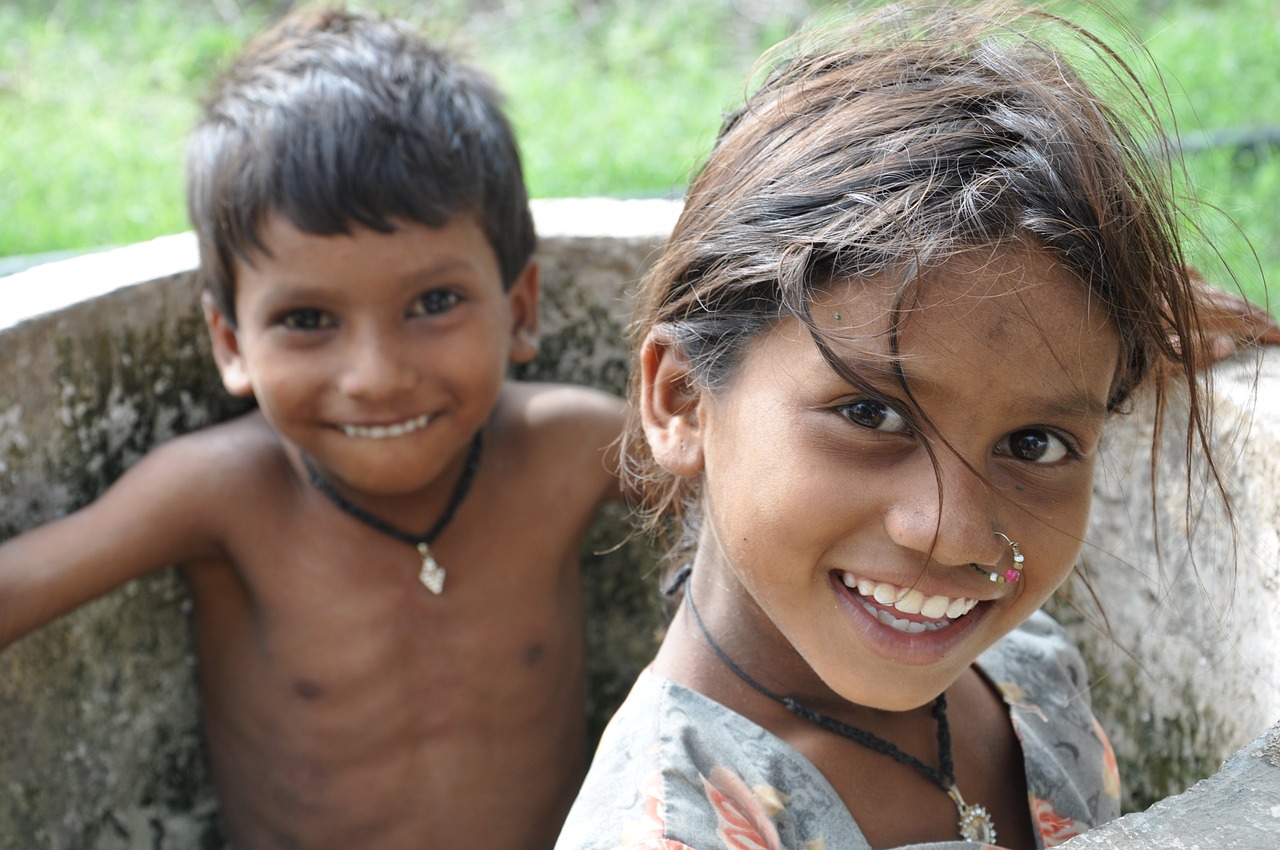
Ruwan M Jayatunge M.D.
Attention-Deficit Hyperactivity Disorder (ADHD) is a neurobehavioral developmental disorderaffecting about 3–5% of the world’s population. ADHD was first described by Dr. Heinrich Hoffman in 1845. He eloquently wrote about children with ADHD and their characteristics. Contemporary studies concur that the symptoms of ADHD are caused by a neurological dysfunction within the brain, mostly due to a deficiency in a specific neurotransmitter in the lower area of the brain. The principle characteristics of ADHD are inattention, hyperactivity, and impulsivity.
Attention-Deficit Hyperactivity Disorder is a condition that becomes apparent in some children in the preschool and early school years. Sometimes it may persist into adulthood. About 60 percent of children diagnosed with ADHD retain the condition as adults. These children need care and attention. When hyperactivity, distractibility, poor concentration, or impulsivity begin to affect performance in school, social relationships, or the ability to accomplish day-to-day activities, therefore, they need treatment.
According to the US-based statistics, an estimated three to five percent of school-age children suffer from ADHD. Although there are no statistics available in Sri Lanka, a considerable number of children are affected by ADHD, and many do not receive any treatment. In our school system, ADHD children are considered bad students who are disobedient. But the fact is, their behavior is caused by complex etiological factors, and they are not bad by nature.
They have a poor attention span. They have difficulty organizing tasks and activities. Furthermore, they act as if “driven by a motor” and cannot remain still. Difficulty remaining seated; Easily distracted; Gives answers to questions before they are completed; Difficulty following instructions from others. Difficulty sustaining attention in tasks or play activities shifts from one uncompleted task to another; Talks excessively; Interrupts others; does not seem to listen; Engages in physically dangerous activities without considering the possible consequences; is restless and does not follow the commands.

There are a number of risk factors associated with ADHD. Major etiologic contributors include adverse responses to food additives and intolerances to foods. Too much refined sugar, Chocolate and Genetically Modified Food can increase hyperativity in some children. Common food additives and colorings can increase hyperactive behavior; some artificial additives increase hyperactivity and decrease attention span in a wide range of children. Some have sensitivities to environmental chemicals, molds and fungi. Exposures to neurodevelopmental toxins, such as heavy metals and organohalide pollutants can precipitate the condition.
General Strategies to combat ADHD are important. Parental Education is vital. The parents must be taught how to handle the children. Some parents use corporal punishment, which can lead to the damage the personality. Parent-coached social skill training gives insight and handiness to manage an ADHD child more effectively. Medications are necessary since there is an imbalance in brain chemistry. The medications must be prescribed by a qualified medical professional. Ritalin (methylpenidate) is widely used to treat ADHD. Medications must be prescribed by a qualified Physician.
Apart from drug therapy, special Psychotherapeutic approaches are essential. Behavior Modification Programs for Home and School can be used to minimize inattentiveness and improve concentration. Relaxation training advances emotional control and the child is able to face day-to-day activities without much tension. CBT, or Cognitive Behavioral Therapy is important to improve motivation, problem-solving skills, and self-esteem. Some experts recommend Fun Cognitive Rehabilitation Exercises (Brain Training) to improve attention span.
Cybertherapy is another mode of treatment that can be used for ADHD. In cyber therapy especially designed computer animation programs are used to enhance attention, concentration, eye contact and fine motor movements. The therapist should allow the child to change work sites frequently while completing homework or studying. Behavioral approaches can be attempted to help the child concentrate on sitting still, staying on task or thinking before acting. Many ADHD children can be managed via music therapy. Music therapy reduces their excessive stress factors. In order to enhance their productivity, guidance must be given to the students to verbalize a plan before solving problems or undertaking a task.
The therapist should provide opportunities for students to show divergent, creative, and imaginary thinking. On most occasions, ADHD children have a good IQ, and if their massive energy is used prolifically a good results can be expected. Art Benjamin, the famous Professor in Mathematics was an ADHD child and he was able to conquer the illness. Therefore, ADHD is not a paralyzing condition. If positive guidance is given to the child, he/she can be a productive person.
Extracted from https://transyl2014.blogspot.com/

Sexual Attitudes and Practices in Ancient Sri Lanka

Ruwan M Jayatunge M.D. PhD
Sex is a basic human need, common to all people at all times (Shokeir &, Hussein, 2004) and exclusively a biological function, defined based on that individual’s individuality and socio-cultural background (Kumarasinghe et al., 2022).
Ancient Sri Lankans had varied sexual lives. The ancient folklore and texts unveil the traditions of sexual behaviors among the ancient Sri Lankans. In ancient Sri Lanka, sexual desire was considered a vivacious force, and sexuality was redefined as a personal right. These conditions existed until the colonization of indigenous sexualities.
Culture is a drastic factor that affects the sexual lives of people. The ancient sexual behaviors and practices were affected by sociocultural, psychological and, biological factors. Ancient Sri Lanka was a male-centered society. In this society, sex was not considered sinful. Virginity was not viewed as a virtue; there were no practices of veneration of the Virgin.
According to Singh (1999) Sexual perversions are often a product of civilized life and most societies permit some degree of deviant sexual behavior as a relief from stress of routine life. Sri Lankan culture has its own folklore and myths, and some describe incest, which in today’s world is considered taboo. Incest is sexual intercourse between family members and close relatives. The mythological Story of Sinhabahu describes the origins of the ‘Sinhala’ race testifies to the existence of incest. According to the Sinhabahu legend, the prince Sinhabahu married his own sister Sinha Seewali committing incest. Sontakke (2017) indicates that during prehistoric times, it appears that there was no such restriction on mating in close blood relations.
Buddhism was first brought to Sri Lanka during Mauryan Emperor Ashoka’s period (Sangharakshita, 1975) highlights that Buddhism had no direct concern with the collective life of man on the social and political level. The ancient Sri Lankans lived according to strict hierarchical social organization and kings had unquestionable power. Many kings enjoyed extremely active sex lives. They had harems and used to engage in various sexual activities. The Mahavamsa, the ancient chronicle of Sri Lankan history, describes elegant and extravagant harems owned by powerful kings in ancient Sri Lanka. The kings had the practice of marrying multiple spouses. Polygamy was a vital political aspect of the king. They used servants who had been castrated to work in harems.
There was no rigid gender system in society. The ancient Sri Lankans never had a binary gender system, and there was room for a third gender. The third gender in ancient Sri Lanka were known as “pandaka. The people had compassionate attitudes toward the third gender. Although they were identified as seductive, pandakas were inclusive of society. Notably, there was no persecution against them. The third gender has been traditionally perceived and accepted.
Tantric influence on Sri Lankan Buddhism was significant, and Tantric attributes can be seen in ancient Sri Lanka. Many centuries before Sigmund Freud, Richard Freiherr von Kraft-Ebing, Albert Moll or D.H. Laurence, the Tantric Buddhist monks discussed the wider aspects of human sexuality. Tantric practice emphasizes the importance of sexual intimacy and spirituality. The practice intertwines spirituality, sexuality, and a state of mindfulness.
The ancient Sri Lankan women of nobility enjoyed certain individual liberties and sexual freedom. Anula (aka Anuladevi) was the first known queen regnant in Sri Lankan history. The queen Anuladevi of Sri Lanka reigned from 47 BC –to 42 BC had an uncontrollable and excessive desire for sex. She became famous for her promiscuous behavior and had an infamous reputation as a nymphomaniac.
King Kashyapa who ruled the country from 473 AD to 495 AD had his harem in Sigiriya citadel and had Persian beauties as lesser wives. Some of these pretty Persian women were depicted on the Sigiriya Frescoes.
There is evidence that social prostitution existed during ancient times. King Kumaradasa (6th century A.D.) was highly influenced by the Indian poet Kalidasa and the king invited Kalidasa to live in his royal palace. During his stay the poet Kalidasa was poisoned by a prostitute and his death devastated the king and eventually, the king committed suicide over the poet’s death.
Some kings and noblemen in ancient Sri Lanka enjoy orgies. They practiced unrestrained sexual activity. A stone carving at the Nalanda Gedige, believed to have been built between the 8th and 10th centuries, depicts erotic allure and sexually explicit sculpture on orgies.

Robert Knox who lived as a prisoner for 20 years reported existing abortions and infanticides in the Kandyan Kingdom. He further describes polyandrous union in Kandyan society. Furthermore, he describes customs of hospitality that involved offering guests food, shelter, with one’s own wife or daughter. This tradition was known as Bulath Hiraya. During this period, genetic disorders were emerging due to inbreeding, and this practice was intended to accumulate new genes in the common genetic pool.
Rukule Padima (intercrural sex, which is also known as coitus interfemoris) was another mode of sexual behavior that was practiced by some aristocrats. They used underage girls for their sexual gratification. Even Pederasty (sexual relationship between an adult man and a pubescent boy) was a common practice among the noblemen. There was no taboo nature, and these practices were accepted in high society. However, there are no historical documents to prove that female pederasty existed in ancient Sri Lanka.
The institution of marriage occupied a unique place and the marriage of cross cousins was an accepted form, and it never fell under incest taboos. However, caste equality was strongly taken into consideration.
Homosexuality was not considered as a deviant behavior in ancient Sri Lanka. There were no legal restrictions on homosexuality. Some kings enjoyed homosexual unions. The King Sri Vira Parakrama Narendra Singha (1707–1739 AD) was fond of being with young boys with embodiment of feminine traits.
Sexual beliefs and behaviors in ancient Sri Lanka indicate that the islanders relished a greater extent of sexual freedom compared to medieval Europe. There was no concept of sexual sin or sexual persecution that affected the population. The sexual repression carried out by the Inquisition In medieval Europe affected a great number of people. Between the 15th and 18th centuries, some 50,000 women were executed as witches in Europe, and most victims were burned at the stake. Most of these female victims were charged with sexual sins. Sexual attitudes and practices in ancient Sri Lanka indicate that the society had sexual tolerance and compassion.
References
Kumarasinghe, M., De Silva, W.I., de Silva, R. et al. Unmarried Sri Lankan youth: sexual behaviour and contraceptive use. Contracept Reprod Med 7, 19 (2022). https://doi.org/10.1186/s40834-022-00185.
Sangharakshita Bikshu. 1975. Buddhism. In A.L. Basham (ed.). A Cultural History of India. Oxford University Press: 83‐99.
Shokeir AA, Hussein MI. Sexual life in Pharaonic Egypt: towards a urological view. Int J Impot Res. 2004 Oct;16(5):385-8. doi: 10.1038/sj.ijir.3901195. PMID: 15475944.
Singh A. Regulation of human sexual behaviour, sex revolution and emergence of AIDS: a historical perspective. Bull Indian Inst Hist Med Hyderabad. 1997 Jan;27(1):63-74. PMID: 12575704.
Singh A. Social basis of deviant sexual behaviour: a historical perspective. Bull Indian Inst Hist Med Hyderabad. 1999 Jan;29(1):51-62. PMID: 12585287.
Extracted from https://transyl2014.blogspot.com/







